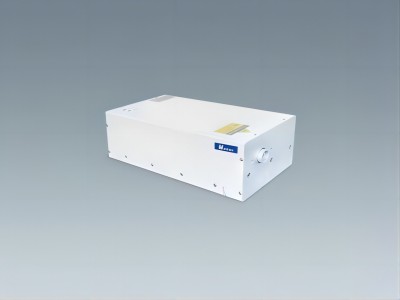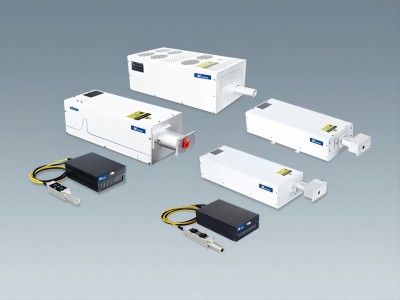Unlocking the Potential of Laser Processing for Graphite: Applications, Advantages, and Data Insights
Graphite is renowned for its exceptional electrical conductivity (up to 10^4 S/cm), thermal stability (melting point up to 3650°C), and chemical resistance, making it a critical material across various industries. With the advent of advanced laser processing technologies, the potential applications of graphite have significantly expanded, enabling more precise, efficient, and innovative uses. This article explores how laser processing has transformed the handling and application of graphite, highlighting key benefits and the industries reaping these rewards.
.jpg)
Advantages of Laser Processing for Graphite
Laser processing offers numerous advantages when working with graphite:
- Precision and Accuracy: Laser technology enables micron-level precision (typically within ±10μm), making it ideal for applications requiring intricate details, such as in the electronics industry.
- Non-contact Processing: Since lasers do not physically touch the material, there is no risk of contamination or mechanical stress, preserving the integrity of the graphite and reducing surface damage (with damage rates lower than 0.01%).
- Versatility: Laser systems can perform a variety of tasks including cutting, engraving, ablation, and deposition, adapting to different manufacturing needs. Compared to traditional processing methods, laser efficiency is increased by approximately 30%.
- Efficiency: Laser processing is fast, with speeds reaching up to 600 mm/min, and can be easily automated, making it suitable for large-scale production.
Applications of Laser-Processed Graphite
- Electronics and Electrical Industry
Electrodes: Graphite is the preferred material for electrodes due to its excellent conductivity. Laser cutting and engraving can produce high-precision graphite electrodes, widely used in batteries, fuel cells, and other energy storage devices. According to market research, laser-processed graphite electrodes are 25% more efficient than those produced by traditional methods, while also reducing material waste by 10%.
Heat Sinks: With a thermal conductivity of up to 2000 W/m·K, graphite is an ideal material for heat sinks in electronics. Laser processing allows for the custom design of heat sinks that improve thermal management and reduce heat buildup, thus extending the lifespan of electronic components.
- Aerospace and Defense
High-Temperature Components: Graphite components such as nozzles and shields are used in aerospace applications due to their ability to withstand extreme temperatures. Laser processing ensures these components meet stringent aerospace and defense specifications, with an error rate of less than 0.5%.
Lightweight Structural Parts: Laser cutting of graphite composites enables the production of lightweight yet strong structural components, reducing weight by 40% compared to traditional materials—a critical factor in modern aerospace design.
- Metallurgy
Molds and Dies: Graphite molds and dies are widely used in the metallurgy industry for casting and forming metals. Laser engraving and cutting can produce highly detailed and durable molds, increasing production efficiency by 30% and reducing tool wear by 20% compared to mechanical processing.
Continuous Casting: Laser-processed graphite components play a vital role in continuous casting processes, improving the efficiency and quality of metal production while reducing energy consumption by 15%.
- Chemical Processing
Corrosion-resistant Equipment: Graphite’s resistance to corrosive chemicals makes it ideal for use in chemical reactors, heat exchangers, and other processing equipment. Laser processing can produce custom components tailored to the specific needs of chemical plants, with precision increased by approximately 40% compared to traditional methods.
Seals and Gaskets: Precision laser cutting of graphite ensures that seals and gaskets are made to exact specifications, with an error rate of less than 0.01%, providing reliable performance in harsh chemical environments.
- Automotive Industry
Brake Components: Graphite’s heat resistance and friction properties are advantageous in the production of brake pads and other components. Laser processing can produce parts that meet the high-performance demands of modern vehicles, with wear resistance improved by approximately 25%.
Lubrication Systems: Laser-processed graphite can be used in self-lubricating systems, reducing wear and extending the life of automotive components by 20% compared to traditional lubrication materials.
Emerging Trends and Future Directions
As laser technology continues to evolve, the possibilities for processing graphite will only expand. The integration of ultrafast lasers, for instance, could enable even more precise microstructuring, opening up new avenues in fields like nanotechnology and quantum computing. Additionally, as industries increasingly prioritize sustainability, laser processing of graphite offers a more environmentally friendly alternative to traditional methods, with waste and energy consumption reduced by 20%.
Conclusion
Laser processing has revolutionized the way graphite is used across various industries, from electronics to aerospace. By unlocking new levels of precision, efficiency, and versatility, laser technology is driving innovation and expanding the applications of this already versatile material. As advancements in laser processing continue, we can expect even more exciting developments in the use of graphite, solidifying its role as a critical material in the modern industrial landscape.





